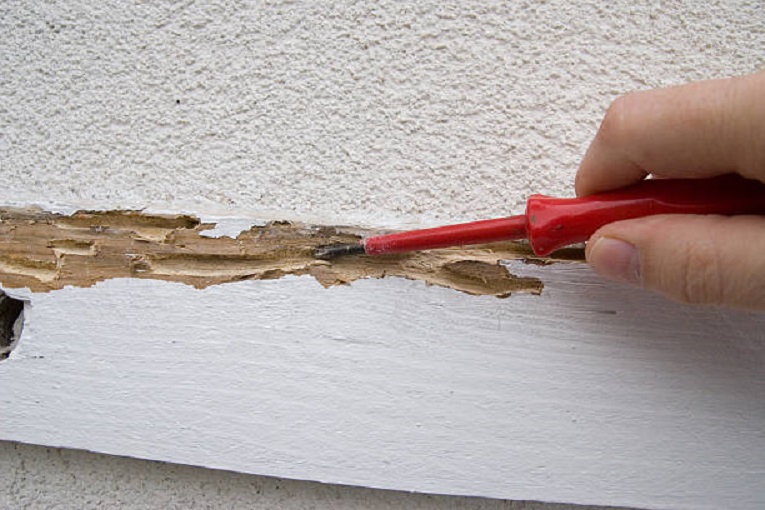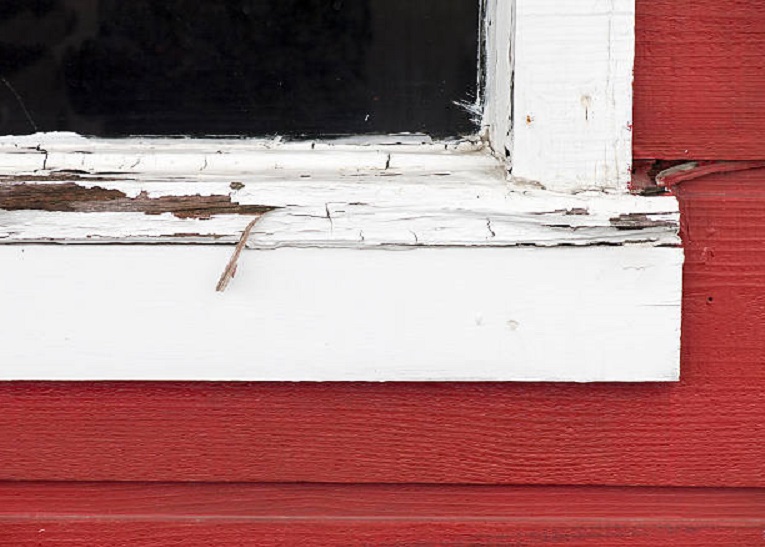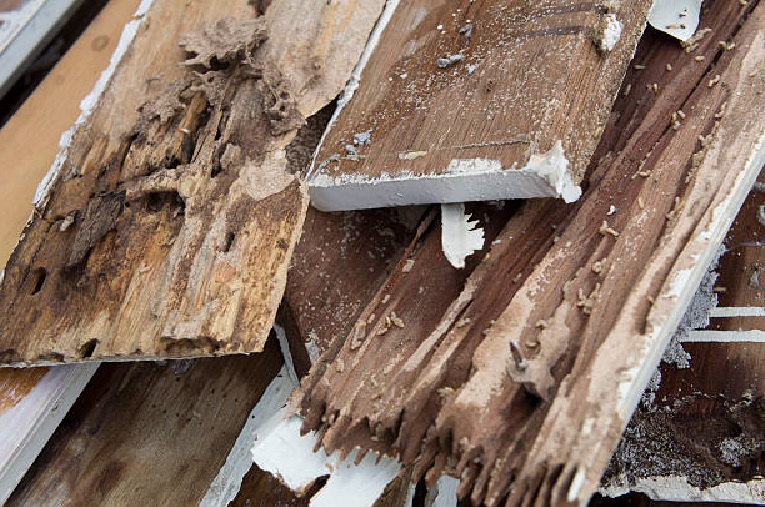There are several tried and true methods to control termites, such as wood treatments, and preservatives, but what about a layer of paint? Do termites eat painted wood? Yes, termites can make their way inside and eat wood below the layer of paint. Termites won’t eat the paint but they can make their way in and eat wood that has been painted.
Some may think that termites will not eat wood that has been painted, however, termites seem to have no such reservations. If they make their way inside they can eat and severely damage wood that has been painted before you even notice it.
If you have found signs of termites and are now in damage control, you may be thinking of termite prevention methods. Continue reading further to learn more about ways to prevent termite damage on painted wood, signs you have a termite problem, and how to remediate termite issues.
How to identify termite damage on painted wood
The existence of termites can be determined from wood that has been eaten away or that has a brittle or hollow appearance. It’s possible that you have a termite infestation if you notice any of the following symptoms of damage caused by termites:

- Cracks in internal walls, ceiling beams, or rafters that are not explained.
- Floorboards and baseboards that have a weak feeling or sound hollow when walked on.
- Sections of the floor that are bubbling or sinking.
- Mud tubes on the house’s exterior.
- Sticking doors and windows.
- Destroyed roof tiles.
- Holes throughout wood pieces.
- Chipping wood and paint.
How to prevent termites from eating painted wood
Can you stop termites from eating painted wood? Yes! Here are a few things you can do to deter termites from damaging wood:
1. Use a vinegar and borax treatment
Whether the wood has been painted or not, you have the ability to treat it on your own if it is untreated and has a lot of moisture, and is sitting about collecting termites. The application of a coating made of vinegar and borax will prevent termites from eating on wood as it works as a simple wood treatment.
2. Always treat the wood before applying paint
You can also use termite-specific insecticides on the outside of the painted wood. However, this method is not recommended for long-term use because once it rains or gets wet, the chemicals will slide right off of the painted wood. Treating the wood before painting is a great way to treat your exposed wood while protecting the chemicals from the outdoor elements.
3. Repaint the wood if the paint is old
The best termite prevention, however, is proactiveness surrounding the wood. Treat the wood before painting, fix any imperfections or cracks in the paint, and do not let the wood become waterlogged or even moisture ridden as wet wood acts like a homing beacon for termites.
Can you paint over termite-damaged wood?
Yes, but it won’t kill the termites or solve the problem. The vast majority of specialists advise against simply painting over termite damage to wood, as the termites may continue damaging the wood underneath the new fresh layer of paint. By painting over termite-damaged wood you are only solving the issue temporarily.

In order to eradicate a termite problem completely, you will need to take action against the termites themselves. Covering up the entrances to their homes with paint will not solve the problem. In the long run, you will have painted wood with holes that are chipping and dissolving.
What kind of wood is termite resistant?
Teak, bamboo, redwood, cypress, cedar plank, and strand board are some examples of naturally termite-resistant types of wood. Other naturally termite-resistant forms of wood include strand board and redwood. However, neither one of these choices is appropriate for use in residential construction.
Only by utilizing treated wood will you have a real chance of proactively warding off termites in your home or your woodworking projects.
Treated wood is wood that has been pre-treated with pesticides, preservatives, and other chemicals to prevent undesirable pests from having a feast on your home. This is done so that treated wood can be used in construction. Imidacloprid or fipronil are the two most popular insecticides used on treated wood. There are more organic options, but they usually don’t work as well as true insecticides.
What kind of wood is prone to termite damage?
Termites prefer untreated timber that has been compromised by water. Termites love this kind of wood. If you have cause to believe that your home has been damaged by termites, you should look for signs of water damage as well. This is one of the primary reasons for this. Wooden windows are a prime target of termites as they are exposed to the elements and their paint and sealing are often chipping away, leaving them vulnerable.
Another type of wood that is more prone to termite damage than others are varieties of soft woods. Pine and spruce are two of the types of wood that are the most susceptible to termite damage according to a controlled study done to see which wood termites prefer.
What is the best way to stop termites?
Termites are drawn to wood that has a high moisture content; therefore, decreasing the humidity and moisture content can help a great deal in controlling a termite problem and preventing the formation of a habitable environment in which they can cause damage.
Check your plumbing, air conditioners, and refrigerators for leaks, and make sure that all of your home’s windows and doors have weather stripping installed. Dealing with anything that has the potential to soak through wood and attract termites is an important step in mitigating the risk of an infestation.
You can also use a variety of other techniques to treat the wood on your own. You may protect the wood from termites by painting it, applying oil to it, or spraying it with a pesticide that kills termites. The application of lacquer and varnish to wood that is prone to damage from termites also works very well.
Getting rid of termites on painted wood
To get rid of a termite colony, the first thing you’ll want to do is stop the spread. If it’s a piece of furniture, bring it outside far from other vulnerable wood. Termites will not remain in an area for very long if they do not have additional food sources. If infestation is extensive, you should use termite insecticide or hire an exterminator.
The damage caused by termites is often not discovered until it has reached a point where it is severe enough to cause significant structural damage that results in significant expenses.
After the termite colony has been eradicated, you will need to decide whether you will replace the rotten and damaged wood on your own or whether you will hire a professional to assist you in making the necessary repairs.
Closing thoughts
Yes, termites will eat painted wood only if there are vulnerable spots in the wood, such as cracks in the paint. Check your painted wood often to make sure it is not cracking or peeling as termites can make their way in through these spots.
